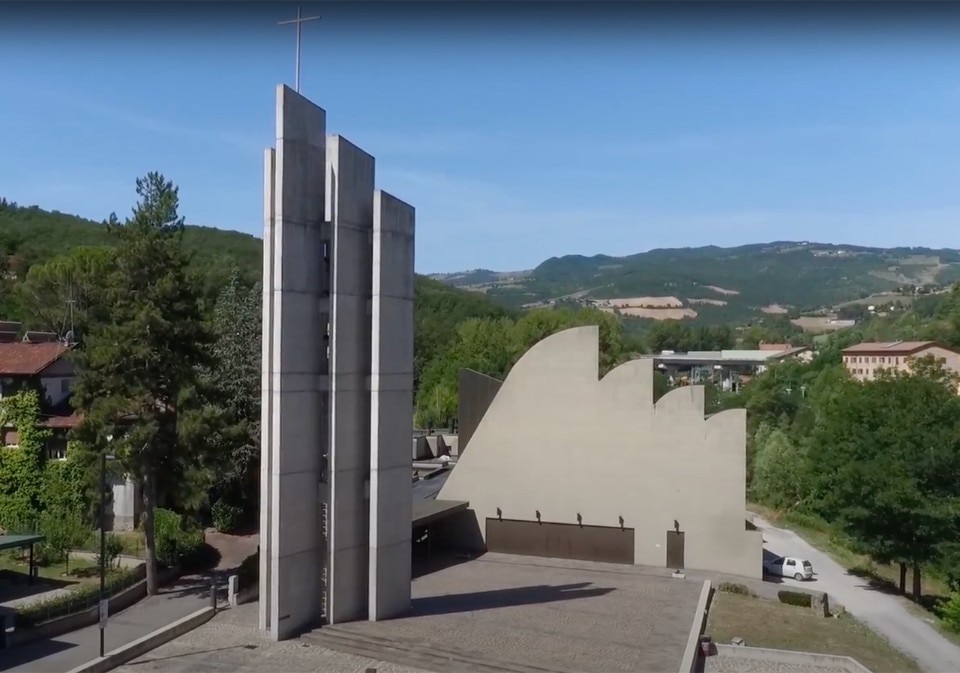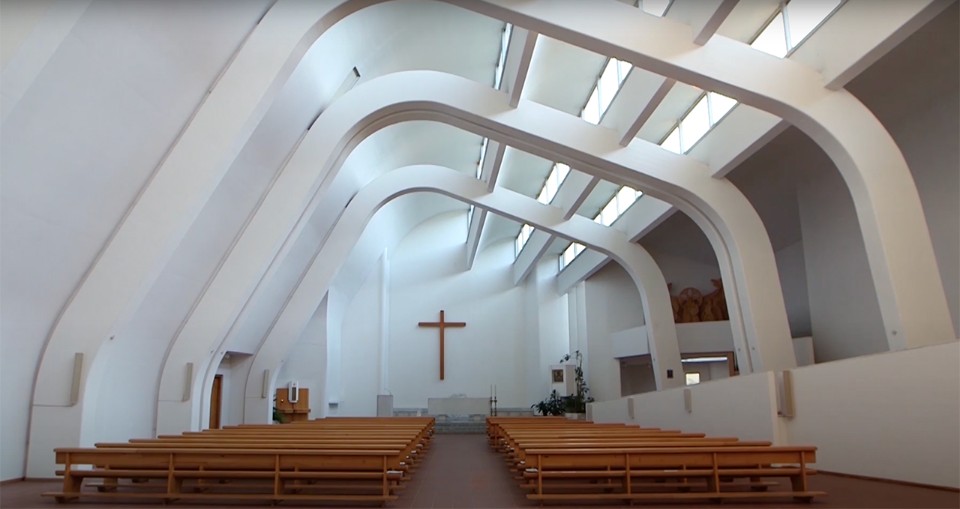We do not thirst after scenography tells the story of the church of Santa Maria Assunta in Riola, a small town on the Bolognese Apennines. Designed by Alvar Aalto in 1965, it was inaugurated thirteen years later, in 1978, two years after his death. The authors are Mara Corradi, journalist, and Roberto Ronchi, TV cameraman, who worked on the documentary for 4 years: a work that led to 15 interviews, a trip to Finland, several trips to Bologna and its surroundings and visits to the archives.
The film, completed in 2018 and presented at numerous international film festivals had never been accessible to the public. In a delicate moment like the one we are experiencing, the directors decided to make it available on demand on Vimeo “to share the message of solidarity and struggle for the good of the community that is at the heart of the history of the church of Riola.” The aim is to donate 50% of the proceeds to the universal cause of those fighting the Coronavirus pandemic, and in particular to the Hospital of Gavardo, Brescia.

“In the thirteen years of gestation of the project for the church of Santa Maria Assunta there are moments of euphoria and exaltation, alternating with moments in which all hope of building the church seems lost,” told Domus Mara Corradi. The history of this building weaves the lives of three very different charismatic figures: Cardinal Giacomo Lercaro, who transformed the very idea of the Catholic liturgy and liturgical space after the Second Vatican Council, Alvar Aalto, a master of the Modern Movement who proposed a new relationship between architecture and man, and Mario Tamburini, an entrepreneur who built all over the world, always managing to make himself loved by his workers and the people.
A decisive role, finally, was played by the community of Riola, which strongly wanted this church, following every step of its story, to the point of donating personally to make sure it would be built. “Every character in this story is characterized by a very strong moral commitment to the goal,” says Corradi. “Whoever was touched by the story knew he was contributing to a gesture of the highest value and carrying out a mission: from Giorgio Trebbi who was the Cardinal’s spokesman on the architecture front, to the architects Glauco and Giuliano Gresleri who followed all the practices and acted as mediators between Lercaro and the citizens; from Alvar Aalto who, at the end of his career, did not believe he would ever be able to build a project in Italy, a land he loved so much, but who equally did his best to conceive it, up to the parishioners from Rieti who even went to study in books who this Finnish architect was. It is a marvellous example of social commitment, from whatever point of view you observe it.”
“We wanted to make people understand an aspect that is often not told in the history of great architectural works, that is how they were built day after day, lived from below, by those for whom they are intended or by those who commissioned them.”

La colonna sonora è di Antonio Ciaccia, pianista jazzista docente alla Julliard School di NY e direttore nel 2018 del Jazz Festival di La Spezia che venne a sapere del film tramite il crowdfunding lanciato dai registi. “Casualmente Caccia a aveva abitato per qualche anno davanti alla chiesa di Riola e un giorno ci chiamò da New York per offrirsi di comporre volontariamente le musiche del film”.
The soundtrack is by Antonio Ciaccia, jazz pianist and teacher at the Julliard School in NY and director of the 2018 Jazz Festival of La Spezia who learned about the film via the crowdfunding launched by the directors. “Coincidentally Caccia had lived for a few years in front of the church in Riola and one day he called us from New York to offer to compose the music of the film voluntarily.”
We do not thirst after scenography will be available online at this link until 4 May.

